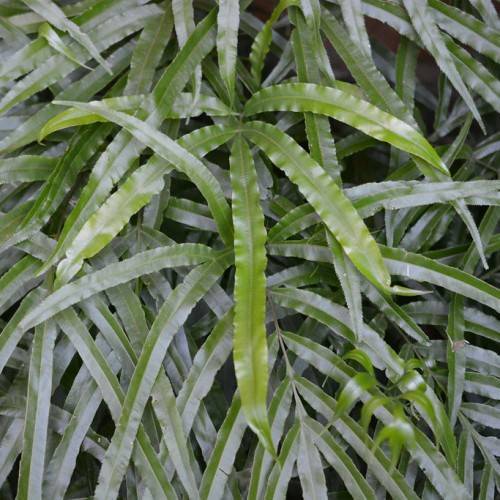
cretan brake
Pteris cretica
Also Known As - ribbon fern,Cretan brake fern,Cretan brake fernCycle:
Perennial
Watering:
Average
Hardiness Zone:
9 - 12
Flowers:
Flowers
Sun:
full sun,part shade,full shade
Fruits:
Fruits Ready In Fall
Edible:
Yes
Leaf:
Yes
Growth Rate:
Low
Maintenance:
Low
Drought Tolerant:
Yes
Salt Tolerant:
Yes
Thorny:
Yes
Invasive:
Yes
Indoors:
Yes
Care Level:
Medium
watering
Cretan brake (Pteris cretica) likes to be kept moist but not soggy. To provide the best care, you should water this species when the soil feels dry to the touch. Generally, this plant should be watered every 5 to 7 days. It is also beneficial to mist the leaves with distilled water once a week. In places with higher temperatures, however, you may need to water more frequently, as soil will dry quicker.
sunlight
Cretan brake thrives in bright, indirect light. It tolerates some direct sun in the morning or late afternoon, but too much direct sun will scorch the fronds. This plant should receive several hours of sunlight per day for best growth and optimal health. In addition, it appreciates a period of rest after being exposed to sufficient sunlight. If Cretean brake is kept indoors or outdoors, it should receive 4 to 5 hours of sunlight per day.
pruning
Cretan brake (Pteris cretica) should be pruned once a year in the early spring, just after new spring growth appears. Prune off any dead or dying fronds that are at the base of the plant to keep the foliage looking neat and healthy. If the fronds are thick, thin out the lower fronds and those less than 20 cm in length. Doing this will help improve air circulation around the plant, which can prevent diseases. Pruning also encourages new growth at the base of the plant.
